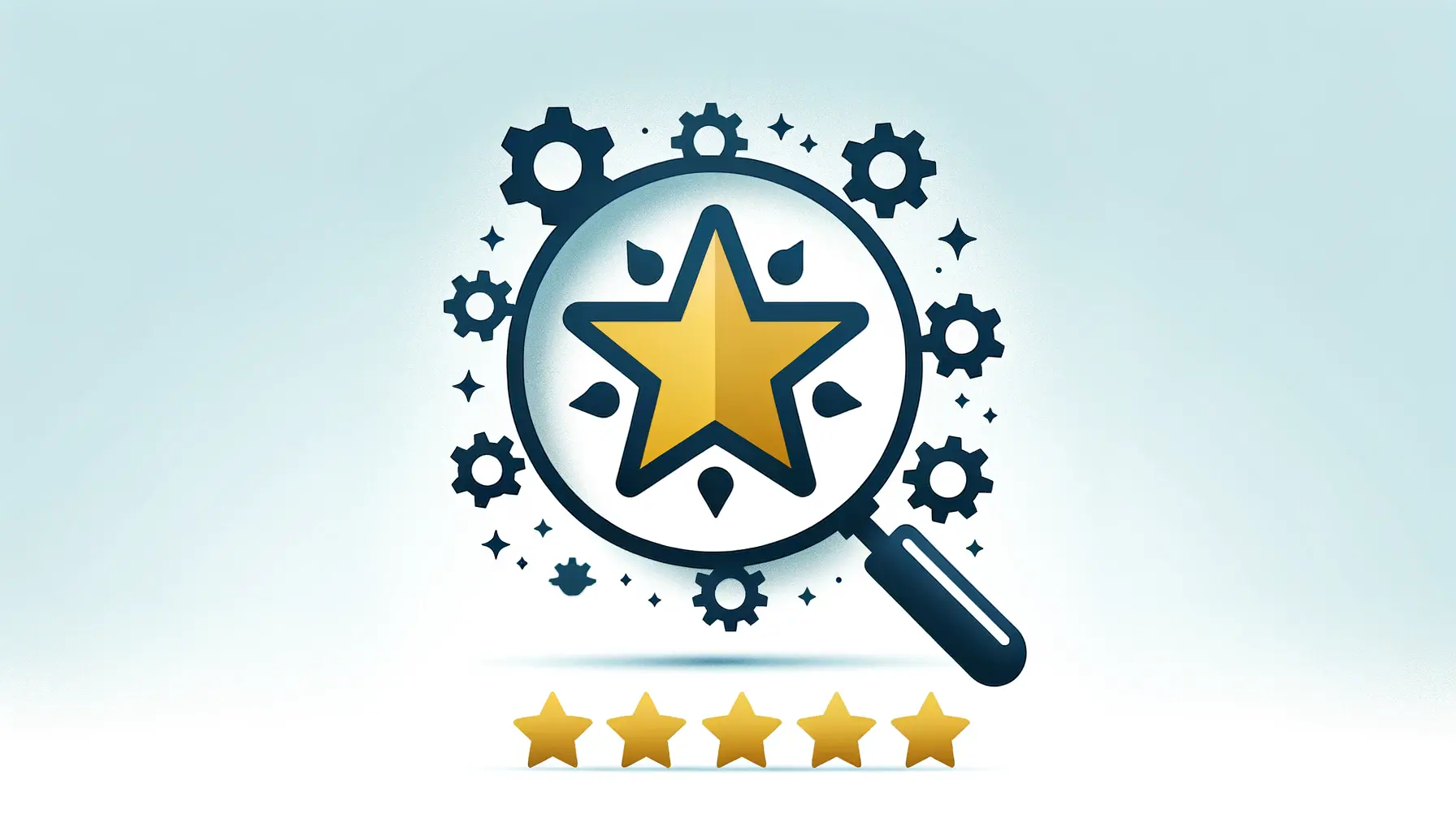In today’s online environment, being seen on LinkedIn is not sufficient; it requires intentional content optimization.
By optimizing your content, you can enhance visibilityThe likelihood of content appearing in users' feeds and being seen by a larger audience., foster engagementInteractions with content, such as likes, comments, and shares., and establish valuable connections within your professional network.
- Learning Content Optimization on LinkedIn
- Creating Engaging and Shareable LinkedIn Posts
- Harnessing LinkedIn Native Features for Content Amplification
- Applying SEO Concepts to LinkedIn Content
- Measuring and Tracking LinkedIn Content Performance
- Expert Skills in LinkedIn Content Optimization for Full Potential
- Frequently Asked Questions on LinkedIn Content Optimization
Learning Content Optimization on LinkedIn
Content optimization is the act of making your posts more relevant to audience interests and LinkedIn’s algorithmA set of rules and calculations used by LinkedIn to determine which content appears in users' feeds. so that your content reaches and resonates with the right audience.
The Worth of Content Optimization
Optimizing your LinkedIn content is important for:
- Increased Visibility: Properly optimized content is more likely to appear in your audience’s feeds and increase reach.
- Increased Engagement: Optimized content creates engagement such as likes, comments, and shares, helping foster a community.
- Professional Development: Regular engaging content can make you a thought leader in your niche.
Advantages of Optimizing Your LinkedIn Content
By optimizing your LinkedIn content, you can:
- Attract Opportunities: Good content leads to job opportunities, collaborations, and partnerships.
- Increase Your Network: Well-structured posts attract connections with like-minded professionals.
- Increase Brand Awareness: Regular, optimized content keeps you top-of-mind in your field.
Glancing back on my own practice, I’ve noticed that after optimizing my posts on LinkedIn, not only were engagement rates enhanced, but more invites to possible collaborations followed.
Has that been the case for you as well on LinkedIn?
Content optimization on LinkedIn ensures that your posts reach the right audience and align with the platform’s algorithm for better visibility.
Creating Engaging and Shareable LinkedIn Posts
Creating content that resonates on LinkedIn takes strategic writing and design principles.
Here are key factors to enhance your posts.
Writing Effective Headlines
Your headline is the first impression readers have of your content.
To make it count:
- Be Specific: Clearly state your role and area of expertise. Rather than ‘Sales Professional,’ for example, use ‘B2B Sales Manager Specializing in SaaS Solutions.’
- Incorporate Keywords: Include industry-specific keywords to enhance searchability. This makes your profile visible in pertinent searches.
- Highlight Value Proposition: Emphasize the unique value that you provide. For example, ‘Driving 30% Growth in Digital Marketing Campaigns.’
A well-crafted headline not only captures attention but also sets the tone for your content.
Incorporating Visual Elements
Visuals exponentially increase engagement on LinkedIn.
To utilize images effectively:
- Use High-Quality Images: Ensure visuals are clear and professional. High-quality images project credibility.
- Maintain Proper Dimensions: LinkedIn recommends 1080 x 1350 pixels for images. This size is optimal for cross-device visibility.
- Limit Text on Images: Keep text minimal to avoid clutter. Aim for 80% visual content and 20% text.
By using visuals in a thoughtful manner, you make your posts more shareable and engaging.
Using Hashtags Effectively
Hashtags categorize your content, making it more searchable.
To get the best out of them:
- Be Relevant: Utilize hashtags that directly relate to your business and content.
- Limit Quantity: Include 3-5 hashtags in a post to maintain focus.
- Create Unique Hashtags: Develop branded hashtags to promote specific campaigns or ideas.
Effective hashtag usage connects your content to a greater audience, enhancing engagement and reach.
Reflecting on my own experience, the use of these strategies has led to more visibility and interaction on my posts.
Have you found the same when optimizing your LinkedIn content?
Engaging LinkedIn posts are crafted with compelling headlines, visual elements, and strategic hashtag use to maximize interaction.
Harnessing LinkedIn Native Features for Content Amplification
Enhancing your LinkedIn experience involves utilizing the native featuresBuilt-in tools and functionalities of a platform, such as LinkedIn’s articles, polls, and live sessions. of the platform designed to improve content optimization and engagement.
Let’s explore some key features that can elevate your LinkedIn strategy.
Using LinkedIn Articles for Long-Form Content
LinkedIn’s publishing feature allows users to create and share long-form articles, providing an opportunity to establish themselves as thought leaders.
To make the most of this feature:
- Deep Dives: Use articles to go in-depth on topics, offering insightful value to your network.
- SEO Benefits: Articles are indexed by search engines, making you more discoverable outside of LinkedIn.
- Engagement: Well-written articles generate discussions, comments, and shares, all of which expand your audience.
Posting quality articles consistently positions you as a knowledgeable professional in your field.
Taking Part in LinkedIn Polls and Surveys
LinkedIn’s polling option enables you to gather opinions, conduct market research, and engage your audience interactively.
To effectively utilize polls:
- Relevant Questions: Ask questions pertinent to your industry to spark meaningful discussions.
- Short Duration: Keep polls open for a limited time to gather responses in a timely manner.
- Share Results: Comment on poll outcomes to demonstrate responsiveness and encourage further engagement.
Polls not only provide valuable insights but also enhance audience engagement by involving them in conversations.
Hosting LinkedIn Live Sessions
LinkedIn Live enables real-time video streaming to your network, allowing interactive experiences.
To utilize this feature:
- Plan Content: Develop engaging topics that provide value to your audience.
- Promote Events: Publicize your live sessions ahead of time to optimize attendance.
- Interact Live: Engage with viewers in real-time by responding to comments and questions.
LinkedIn Live can help humanize your brand and establish genuine connections with your audience.
Personally, utilizing these native tools has helped my LinkedIn content resonate more and my engagement become more meaningful.
Have you tried these features in your LinkedIn strategy?
Using LinkedIn’s native tools like LinkedIn Articles, polls, and live sessions enhances content reach and establishes thought leadershipEstablishing oneself as an authority in a specific industry by sharing valuable insights and expertise..
Applying SEO Concepts to LinkedIn Content
Developing your LinkedIn profile requires strategic content optimization to increase visibility and engagement.
Let’s discuss actionable SEOSearch Engine Optimization, the practice of optimizing content to rank higher in search results. concepts for LinkedIn.
Conducting Keyword Research for LinkedIn
Discovering and implementing the correct keywords is the foundation of optimizing your LinkedIn profile and content:
- Identify Industry-Specific Keywords: Discover words that are commonly used in your industry that potential clients or employers would use to search.
- Utilize LinkedIn’s Search Suggestions: Type keywords in LinkedIn’s search field to see auto-suggestions, which represent popular searches.
- Embed Keywords Naturally: Organically include keywords in your profile, posts, and articles for readability.
Keyword research done correctly makes your profile align with search queries, enhancing discoverability.
Optimizing Your Profile for Search Visibility
A well-optimized profile is crucial for ranking in applicable searches:
- Create an Engaging Headline: State your profession and specialty, including target keywords.
- Develop a Detailed About Section: Expand on your professional background, specialty, and achievements, including relevant keywords.
- Customize Your LinkedIn URL: Create a personalized URL using your name or target keyword to be easily searchable.
These steps constitute a solid profile that ranks higher in LinkedIn’s search results.
Enhancing Post Visibility with SEO Techniques
SEO optimization of your LinkedIn posts can significantly increase their reach:
- Add Keywords to Posts: Integrate keywords naturally in the body of your posts to align with search algorithms.
- Utilize Hashtags Sparingly: Add 3-5 meaningful hashtags to categorize your content and help it get discovered more easily.
- Engage with Your Network: Request comments and shares by asking questions, which signal content relevance to LinkedIn’s algorithm.
Applying these methods can expand your content’s audience and prompt further engagement.
Considering my own experience, making SEO methods a priority has made a huge difference in my LinkedIn content optimization.
Have you considered using SEO techniques as part of your LinkedIn strategy?
SEO techniques such as keyword research, optimized profiles, and structured posts improve discoverability and engagement on LinkedIn.
Measuring and Tracking LinkedIn Content Performance
To effectively optimize your LinkedIn content, you need to measure its performance using the platform’s analyticsData and statistics used to measure content performance and user behavior on a platform. capabilities.
By understanding key metrics, you can refine your approach to maximize engagement and reach.
Knowing Important LinkedIn Metrics
LinkedIn provides several metrics to assess your content’s effectiveness:
- Impressions: The number of times your content appears on users’ screens. Increased impressions translate into broader visibility.
- Engagements: The amount of interactions (likes, comments, shares) your content receives. This reflects how much your audience resonates with your posts.
- Click-Through Rate (CTR): The ratio of clicks to impressions, indicating how effectively your content prompts action.
- Follower Growth: The increase in your followers over time, showing expanding reach and influence.
Monitoring these metrics helps identify successful content and areas for improvement.
Utilizing LinkedIn’s Native Analytics Tools
LinkedIn offers built-in analytics to track your content’s performance:
- Post Analytics: Get detailed statistics for individual posts, such as impressions, clicks, and engagement rates. Analyzing these metrics helps determine which content performs best.
- Audience Insights: Understand followers’ demographics, such as industry, job function, and location. Tailoring content to your audience’s characteristics can boost relevance and engagement.
Periodic reviews of these analytics enable data-driven decisions for your content optimization strategy.
Exploring Third-Party Analytics Tools
Several third-party tools offer advanced analytics features beyond LinkedIn’s built-in insights:
- Sprout Social: Provides sophisticated LinkedIn analytics, including engagement trends and audience growth, to support strategic planning.
- Shield Analytics: Offers in-depth analysis of individual LinkedIn profiles, tracking metrics such as post performance and audience engagement over time.
- Socialinsider: Generates detailed reports on LinkedIn metrics, allowing users to compare performance against competitors and industry benchmarks.
Using these tools together provides a comprehensive view of your LinkedIn content optimization, enabling more effective strategies for growth.
Based on my own experience, leveraging both LinkedIn’s native analytics and third-party tools has significantly improved the effectiveness of my content.
Have you explored these analytics tools to optimize your LinkedIn content?
Ignoring LinkedIn analytics means missing out on valuable insights that can improve your content strategy and audience reach.
Expert Skills in LinkedIn Content Optimization for Full Potential
Content optimization on LinkedIn is not just about posting frequently—it’s about making conscious, strategic approaches to increase presence, engagement, and professional advancement.
By applying the right content optimization techniques, you can turn your LinkedIn presence into a powerful tool for brand building and networking.
The Key Takeaways for LinkedIn Content Optimization
Throughout this article, we’ve covered essential methods for optimizing the effectiveness of your LinkedIn content.
Here are the main points:
- Know Content Optimization: Aligning content with audience preferences and LinkedIn’s algorithm is crucial for boosting engagement.
- Create Engaging and Shareable Posts: Writing attention-grabbing headlines, utilizing visuals, and using hashtags strategically helps attract engagement.
- Leverage LinkedIn’s Native Features: Publishing with LinkedIn Articles, using polls, and hosting LinkedIn Live sessions can enhance content reach and strengthen audience relationships.
- Use SEO Tactics: Conducting keyword research, optimizing your profile, and applying SEO strategies to posts make them more searchable.
- Track and Analyze Performance: Monitoring key metrics such as impressions, engagement, and follower growth helps refine strategies for better results.
Why LinkedIn Content Optimization is Important
Investing time in content optimization for LinkedIn can bring significant advantages:
- More Visibility: Optimized posts appear more frequently in users’ feeds, leading to greater exposure.
- Stronger Professional Reputation: Consistently posting high-quality content positions you as a thought leader in your industry.
- Wider Network: Well-structured and engaging content attracts like-minded professionals and business opportunities.
- More Lead Generation: A strategic approach to content optimization can generate potential clients, partners, or new team members.
Conclusion to LinkedIn Content Optimization
LinkedIn is a valuable platform for professional networking, but standing out requires attention to content creation and engagement.
By leveraging LinkedIn’s inbuilt features, implementing SEO best practices, and regularly analyzing performance, you can refine your content strategy for maximum impact.
As you continue your LinkedIn journey, think about how you can apply these strategies to your own content.
Have you experimented with content optimization on LinkedIn?
What techniques have worked best for you?
Keep refining, testing, and adjusting to ensure your LinkedIn content remains effective and impactful.
Mastering LinkedIn content optimization requires consistency, strategic posting, and engagement with your network.
Enjoyed the article? Let its author handle your social media ads. Visit our service page to get started!
Frequently Asked Questions on LinkedIn Content Optimization
Content optimization on LinkedIn is crucial to boost visibility and engagement.
Below are the most recurring questions and concise answers to guide you on optimizing your LinkedIn content.
LinkedIn content optimization refers to shaping your posts to fit audience interests and the LinkedIn algorithm, thus boosting visibility and engagement.
LinkedIn’s algorithm prioritizes content based on relevance, engagement, and connections, determining what appears in users’ feeds.
High-relevance, quality content such as industry news, thought leadership articles, and visually engaging posts tend to perform well on LinkedIn.
Consistency is key; posting 2-5 times per week maintains engagement without overwhelming your audience.
Encourage interaction by asking questions, responding to comments, and posting content that resonates with your audience’s interests.
Yes, adding 3-5 appropriate hashtags improves searchability by categorizing your content effectively.
An updated and optimized profile enhances credibility, increases content visibility, and attracts a relevant audience.
Yes, utilizing LinkedIn’s analytics feature allows you to monitor performance metrics and refine your content optimization strategy accordingly.
Incorporating relevant keywords in your content and profile enhances searchability and aligns with LinkedIn’s algorithm preferences.













